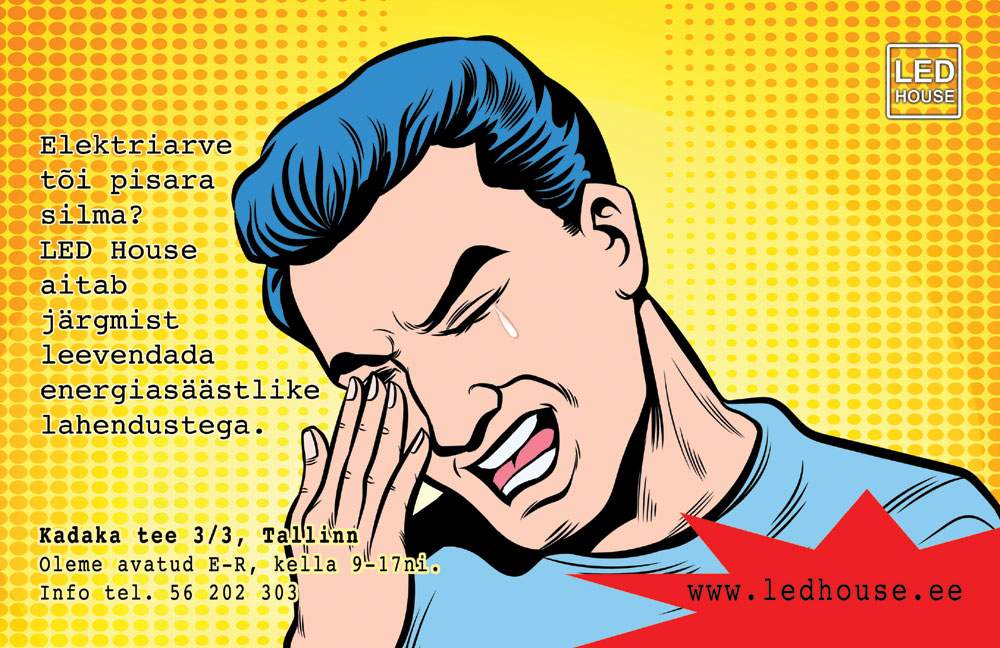Why does an LED bulb use less electricity?
From time to time, you hear that you should "replace your incandescent bulbs with LED bulbs," and that "LED lights don't use any electricity at all." LED bulb manufacturers have made great efforts to lower the price of bulbs for end consumers. Today, they cost about as much as a regular halogen bulb. The main difference lies in durability.
LED bulbs last about 15,000 hours with ordinary use according to the package, but in real life, this often falls to around 10,000 hours. A typical incandescent bulb lasts an average of 1-3 months. This means that during the lifespan of one LED bulb, 10-30 incandescent bulbs or 4 halogen bulbs or about 2 CFL bulbs should be used up. However, the difference is not only in durability, but also in efficiency.
Looking at their electricity consumption, an average LED bulb uses 5-9w of electricity. Below, we compare this to other types of light bulbs:
• Incandescent bulbs: 40-60W
• Halogen bulbs: 30W
• CFL bulbs: 10W
Compared to the 5-9W energy use of LED bulbs (an 8W LED bulb is needed to achieve the same brightness as a 60W incandescent bulb), it is clear why electricity costs are lower with LED lamps and lights. But why is this so and what is the science behind the long life of LED bulbs?
The more scientific side of LED bulb electricity consumption
The reason for the lower electricity consumption of LED bulbs is actually a small device inside the LED bulbs - a semiconductor or a transistor. Its role is to allow a limited amount of electricity to pass through when an electric connection is made, and the rest of the electrical energy is released as light. This is a very simplified overview, but thanks to this structure, LEDs consume significantly less electrical energy than other types of light bulbs.
What are the benefits of LED bulbs?
If all the light bulbs in homes and workplaces are replaced with LED bulbs, savings are guaranteed. Depending on the type and size of the LED bulb, they will pay for themselves in the first 3-6 months of moderate use. From there on, there will be pure savings.
Unlike regular light bulbs, LED bulbs do not overheat during normal use. The little heat energy that is generated during their operation is smoothly dissipated and the bulbs are not hot to the touch. In addition, with regular light bulbs (especially incandescent and halogen bulbs), most of the electrical energy is inefficiently used to produce heat. LED lights use a very large portion of their electricity costs specifically to produce light, not to heat the light bulb.
Mercury has been used in the production of CFL and incandescent bulbs, which is released into the environment when the bulb breaks. Therefore, they are also considered hazardous waste. CFL and LED bulbs do not use such raw materials.
Should you choose LED bulbs or LED strips?
Both have their advantages and disadvantages. For example, the strength of LED bulbs is their easy installation and their compatibility with many types of lighting fixtures. LED strips, on the other hand, are very easy to integrate with any furniture or interior design element, and with little effort, you can change the entire room's atmosphere to be more romantic, luxurious, warmer, cooler, or even colorful.
If you want to light up your furniture or kitchen cabinets, it is easiest and most effective to do so with LED strips. Additionally, it is possible to link the lighting to various sensors so that, for example, the lights turn on or off with a wave of your hand. The range of colors available for LED strips is very wide, and you can design the lighting to suit any preference.
If you need to equip wall, floor, or ceiling lights with LED bulbs, they are available in different sizes and shapes. Additionally, you can choose between the brightness and tone of the light. For example, daylight or soft evening light.
We offer a wide selection of LED products, lamps, bulbs, and LED strips. For inspiration, check out our completed projects and browse our extensive online store. Pay less for lighting.
